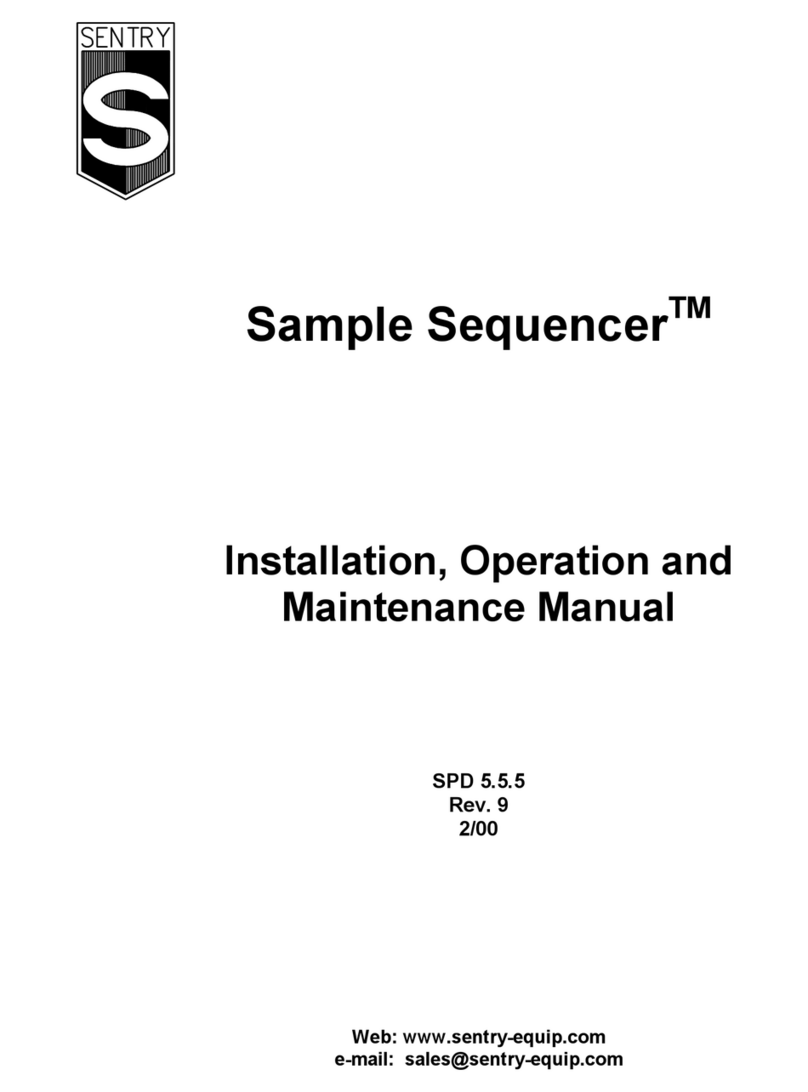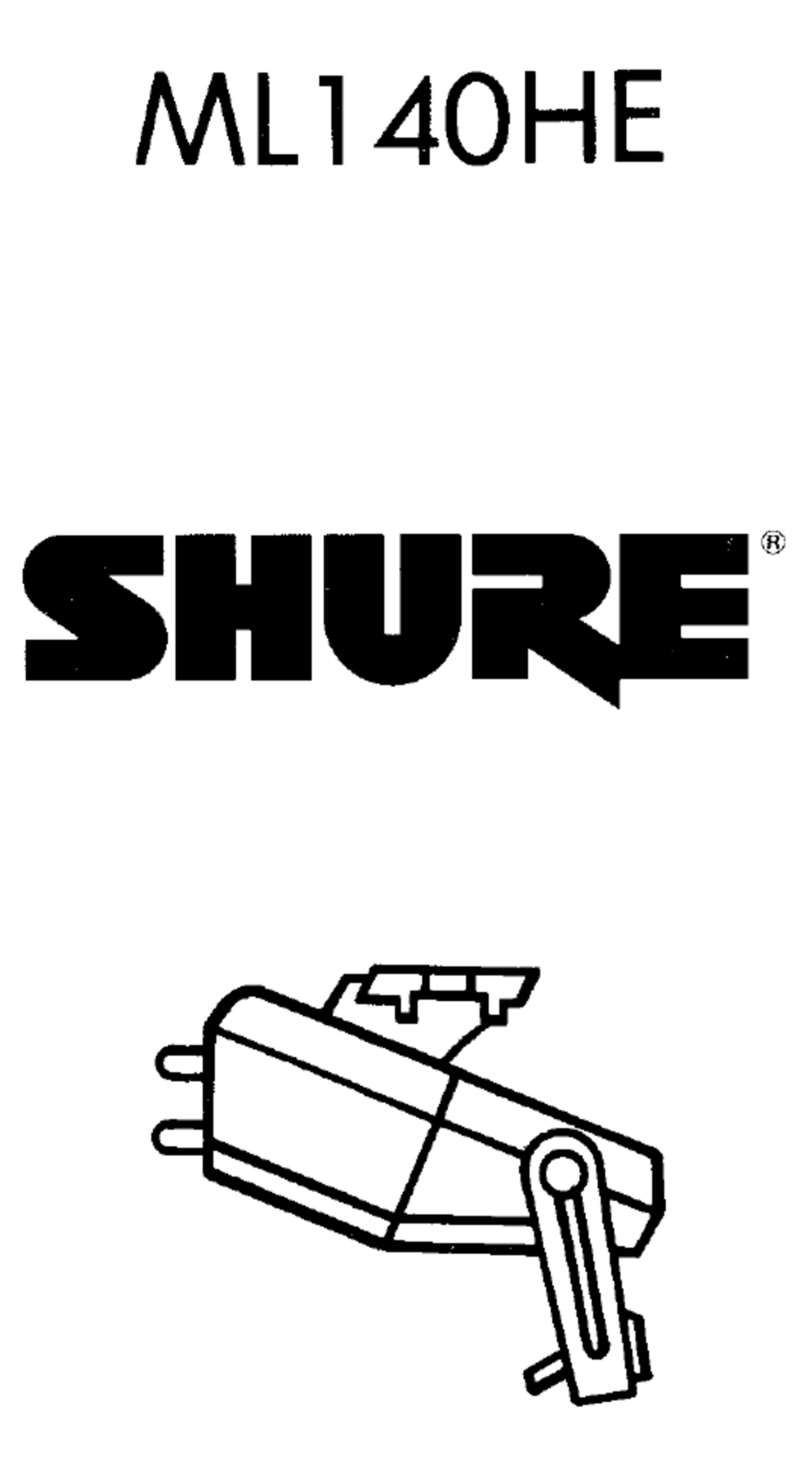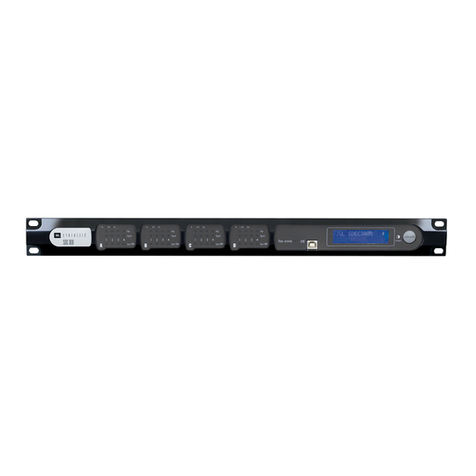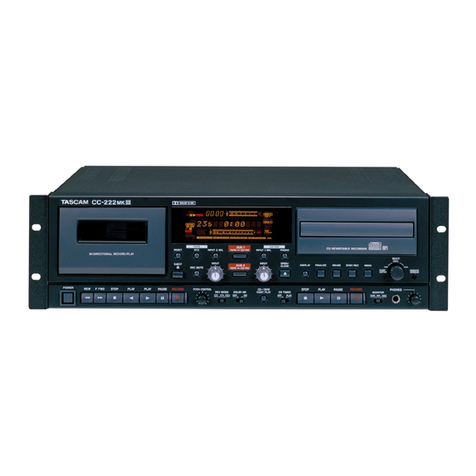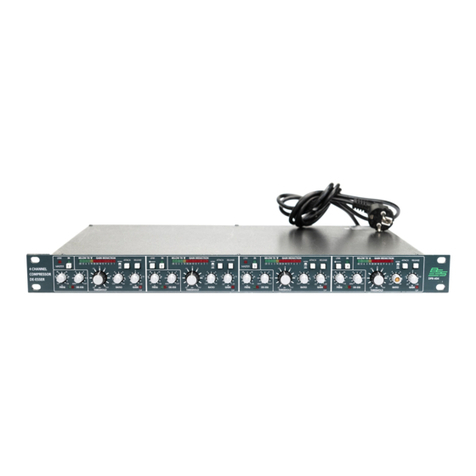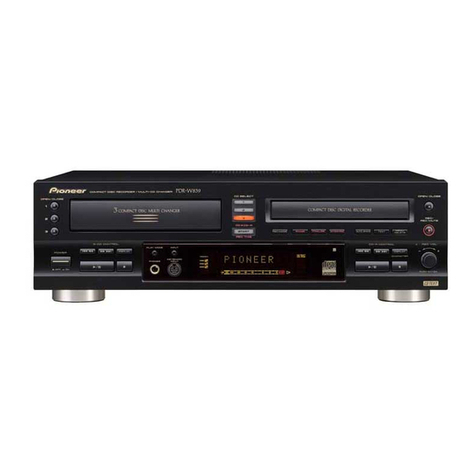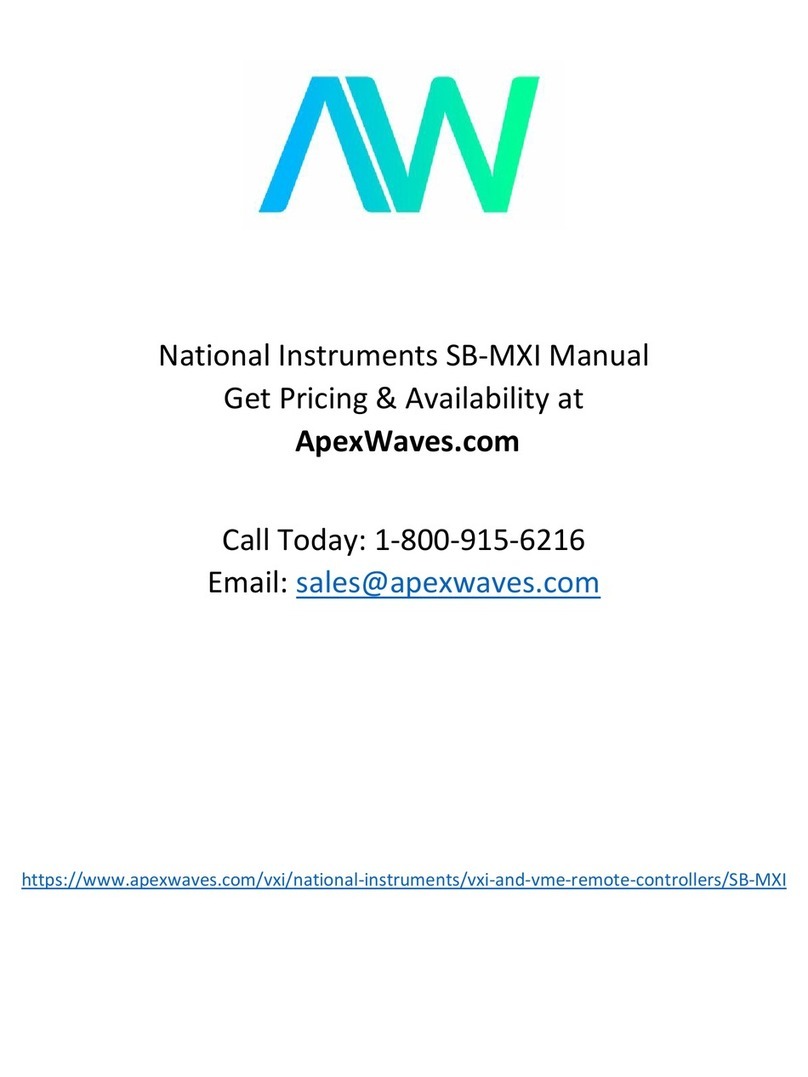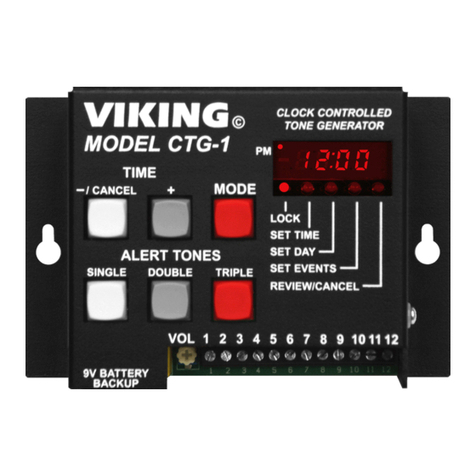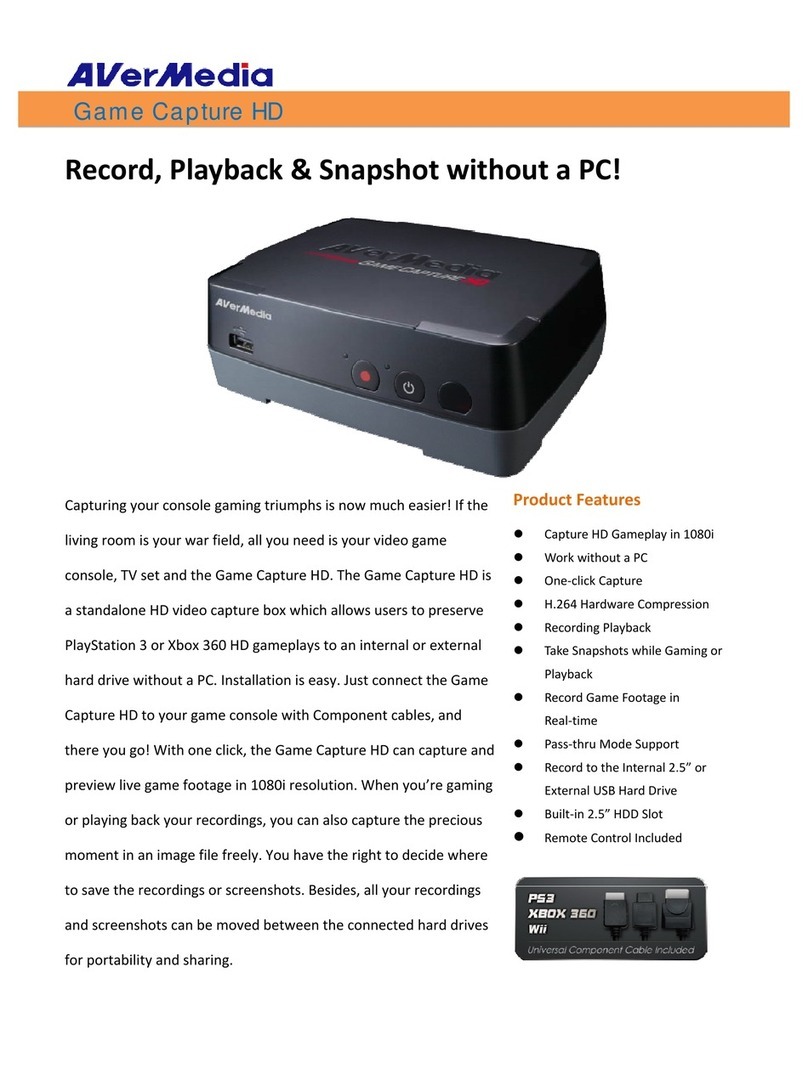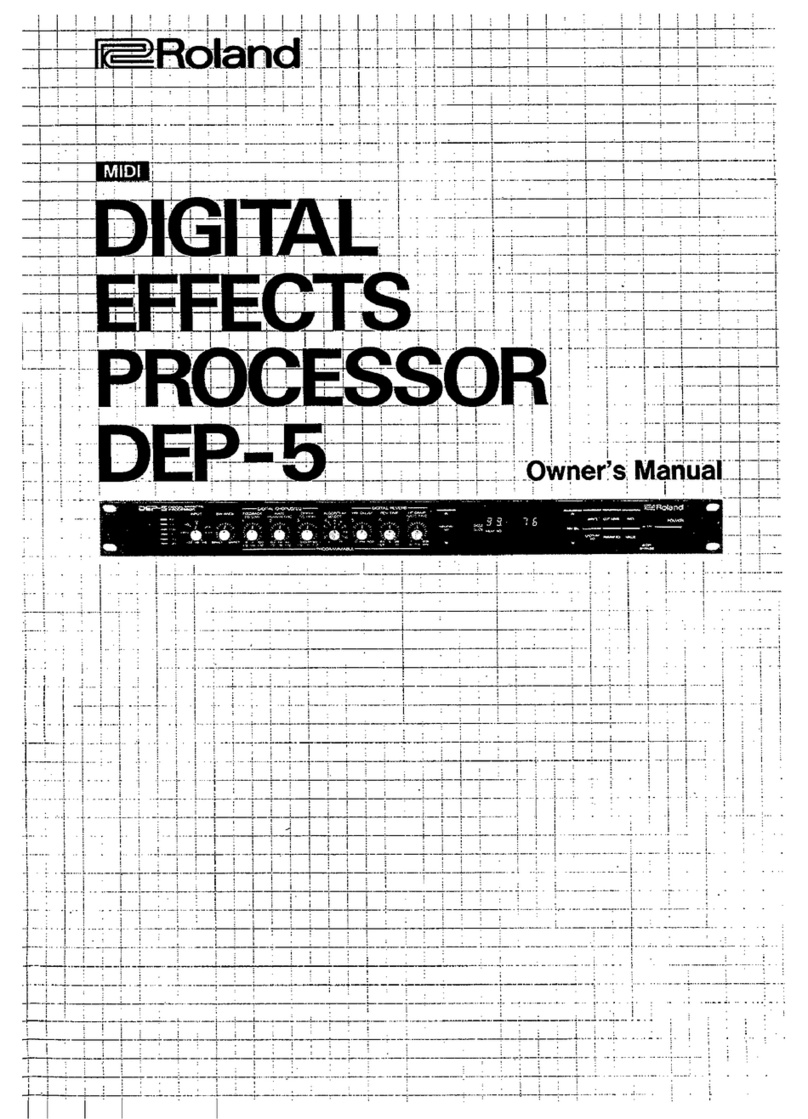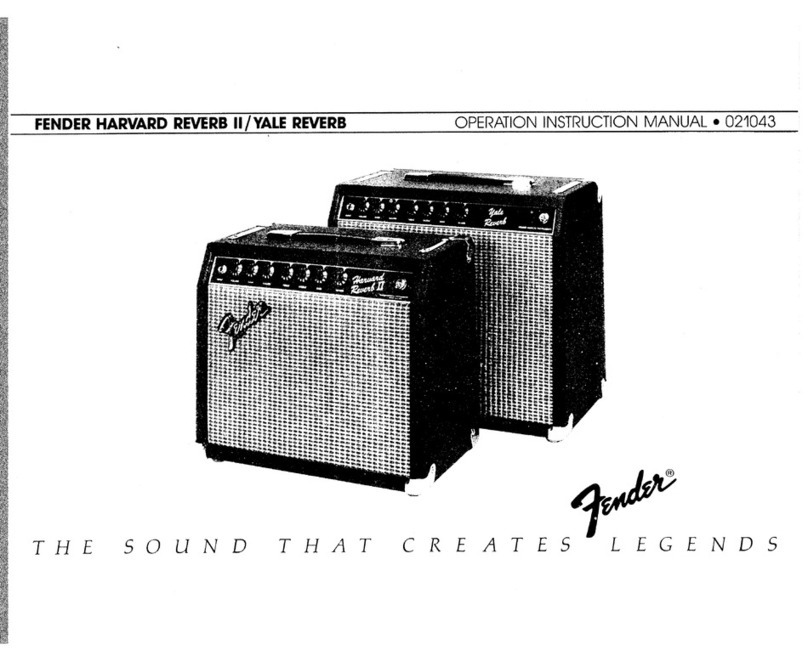Sentry Sample Sequencer 5 User manual

Installation, Operation and
Maintenance Manual
Sample Sequencer5
SPD 5.5.15 Rev. 0 11/11
Original Instructions
SENTRY EQUIPMENT CORP
966 Blue Ribbon Circle N
Oconomowoc, WI 53066 USA
Phone: 262.567.7256
Fax: 262.567.4523
Email: [email protected]
www.sentry-equip.com


Sentry Equipment Corp | Sample Sequencer5
SPD 5.5.15 i
Declaration of Conformity
Sentry Equipment Corp. declares under our sole responsibility that our Sample Sequencer 5 to
which this declaration relates is in conformity with the following standards:
Product Safety:
Certified to CAN/CSA C22.2 No. 1010.1-92 (Certificate # XXXXXXX)
Low Voltage Directive 2006/95/EC
Required Standards include:
EN 61010-1:2001/IEC 61010-1:2001
Safety requirements for electrical equipment for measurement, control, and laboratory use -
Part 1: General requirements
Electromagnetic Compatibility:
EMC Directive 2004/108/EC:
Required Standards include:
EN 61326-1:2006 / IEC 61326:1997 w\A1:1998 & A2:2001
Electrical equipment for measurement, control, and laboratory use EMC requirements - Part 1:
General requirements
Immunity:
Required tests include:
IEC 61000-4-2 ESD
IEC 61000-4-3 Radiated Susceptibility
IEC 61000-4-4 EFT
IEC 61000-4-5 Surges
IEC 61000-4-6 RF Cond.
IEC 61000-4-8 Magnetic Susceptibility
IEC 61000-4-11 Volt dips, interrupts
Emissions:
Required tests include:
EN 55011 Class A limits
EN 61000-3-2 Harmonic
EN 61000-3-3 Voltage Fluctuation (Flicker)
FCC Compliance:
FCC Part 15.107 & 15.109
Canadian Compliance:
ICES 003
RoHS Compliance:
Directive 2002/95/EC
This product complies with the RoHS Directive.
Type of Equipment: Electrical Equipment for Measurement, Control, and Laboratory Use
Part Number: 7-02690F
Year CE Mark Affixed to Product: 2011

Sentry Equipment Corp | Sample Sequencer5
ii SPD 5.5.15
TABLE OF CONTENTS
1SPECIFICATIONS.................................................................................................................1
2SAFETY PRECAUTIONS......................................................................................................3
2.1 USE OF HAZARD INFORMATION .........................................................................................3
2.2 DEFINITIONS ....................................................................................................................3
3QUICK START GUIDE..........................................................................................................5
3.1 ELECTRICAL CONNECTIONS ..............................................................................................5
3.2 CONTROL SCREEN ...........................................................................................................5
3.3 STARTING AND STOPPING THE SAMPLE SEQUENCER .........................................................5
3.4 WIDGETS SCREEN............................................................................................................5
3.5 SETTING THE SEQUENCE ..................................................................................................5
3.6 PLACING SAMPLES IN “SAMPLE/BYPASS”...........................................................................5
3.7 SETTING SAMPLE TIMERS.................................................................................................5
3.8 SETTING THE MODE .........................................................................................................6
3.9 EDITING THE SAMPLE NAMES............................................................................................6
3.10 EDITING ANALYZER NAMES...............................................................................................6
4GENERAL DESCRIPTION....................................................................................................7
4.1 MODES OF OPERATION.....................................................................................................7
4.2 INPUTS AND OUTPUTS ....................................................................................................11
4.3 OPTIONAL MANIFOLD SAMPLING VALVE ..........................................................................12
5OPERATION .......................................................................................................................13
5.1 DESCRIPTION OF CONTROLS ..........................................................................................13
5.2 SCREEN DESCRIPTIONS..................................................................................................15
5.3 OPERATING MODES........................................................................................................35
5.4 VALVE OUTPUTS ............................................................................................................38
6INSTALLATION ..................................................................................................................39
6.1 UNPACKING....................................................................................................................39
6.2 MOUNTING .....................................................................................................................39
6.3 ELECTRICAL CONNECTIONS ............................................................................................43
6.4 SEQUENCER BOARD CONNECTIONS................................................................................46
6.5 ALTERNATE SEQUENCER BOARD CONNECTIONS .............................................................47
6.6 STARTING UP THE SAMPLE SEQUENCER .........................................................................50
7MAINTENANCE ..................................................................................................................51
7.1 CLEANING ......................................................................................................................51
7.2 RECHARGEABLE BATTERY ..............................................................................................51
7.3 DISASSEMBLY ................................................................................................................51
7.4 CALIBRATION..................................................................................................................51
8TROUBLESHOOTING GUIDE............................................................................................53
9FACTORY ASSISTANCE ...................................................................................................54
10 SPARE PARTS LIST ..........................................................................................................55

Sentry Equipment Corp | Sample Sequencer5
SPD 5.5.15 iii
11 ACCESSORIES...................................................................................................................55
12 WARRANTY........................................................................................................................56
APPENDIX A - RECOMMENDED PIPING.................................................................................58
APPENDIX B – USING A SEQUENCER WITH HACH SERIES 5000 ANALYZER..................59
APPENDIX C – MODBUS®REGISTERS...................................................................................63


Sentry Equipment Corp | Sample Sequencer5
SPD 5.5.15 1
1 SPECIFICATIONS
Specifications are subject to change without notice.
Applications: The Sample Sequencer is designed to support sample stream switching in the
batch or continuous modes.
Maximum Number of Samples: 8
Maximum Number of Analyzers: 4
Power:
Input Voltage: 100 - 240 Vac
Frequency Range: 50/60 Hz
Input Current:
1.2 A / 115 V
0.72 A / 230 V
Inputs from Analyzer:
Four analog inputs: 4-20 mA (100 load)
Four digital inputs for end-of-analysis indication.
Four digital inputs for calibration indication.
Four digital inputs for analyzer system alarm indication.
Outputs:
10base-T Ethernet supports MODBUS® TCP/IP communication and embedded web
capability.
Valve outputs (12 VDC) to control a maximum of eight solenoid valves for sample
stream switching. Individual outputs capable of handle up to 2A solenoid load. Total
solenoid load current not to exceed 5.5A @ 12VDC (Please consult factory if individual
solenoid load is greater than 1A @ 12VDC).
12 digital outputs for point number indication and replicated Analyzer Alarms.
0-40V,60mA sinking outputs
Current Outputs: Eight 4 – 20 mA outputs.
Maximum Load: 550 Ω
Nominal Accuracy:
Analog Inputs: ± 0.2% full scale
Analog Outputs: ± 0.2% full scale
Resolution:
Analog Inputs: 10 µA/LSB
Analog Outputs: 10 µA/LSB
Data Logging: Records stored on removable SD card. Storage limations based on size of SD
card.

Sentry Equipment Corp | Sample Sequencer5
2 SPD 5.5.15
User Interface: 4.3” color touch screen, 65,000 colors.
Enclosure: 304 Stainless steel, 16 GA. Designed to meet NEMA 4X (indoor), IPX0
Dimensions: 7.00” (177.8 mm) H x 8.00” (203.2 mm) W x 7.00” (177.8 mm) D
Mounting: Panel or surface.
Ambient Temperature: -5-40 C (23-104 F); Relative Humidity 5-95%
Environmental: Indoor use only
Operating Altitude: 0-2000 m (0-6562 ft.) (Consult factory for other altitudes.)
Mains supply fluctuation: -10% and +10%
Transient overvoltage: 1500Vac
Pollution degree: 2
Agency Approvals:
Shipping Weight: 15 lbs (6.80 kg)

Sentry Equipment Corp | Sample Sequencer5
SPD 5.5.15 3
2 SAFETY PRECAUTIONS
Please read the entire manual before attempting to unpack, set up or operate this product. Pay careful
attention to all warnings, cautions and notes. Failure to do so could result in serious personal injury or
equipment damage.
2.1 Use of Hazard Information
If multiple hazards exist, the signal word corresponding to the greatest hazard shall be used.
2.2 Definitions
Indicates an imminently hazardous situation which, if not
avoided, will result in death or serious injury.
Indicates a potentially hazardous situation which, if not
avoided, could result in death or serious injury.
Indicates a potentially hazardous situation which, if not
avoided, may result in minor or moderate injury.
CAUTION used without the safety alert symbol indicates a
potentially hazardous situation which, if not avoided, may
result in property damage.
NOTE
Information that requires special emphasis
SHALL
This word understood to be mandatory
SHOULD
This word understood to be advisory

Sentry Equipment Corp | Sample Sequencer5
4 SPD 5.5.15
Indique une situation imminente et dangereuse qui doit être
évité immédiatement afin d’éviter tout risque de blessures
sérieuses et qui pourrait même entraîner la mort.
AVERTISSEMENT
Indique une situation potentiellement dangereuse et qui doit
être évité immédiatement afin d’éviter tout risque de
blessures sérieuses et qui pourrait même entraîner la mort.
PRÉCAUTION
Indique une situation potentiellement dangereuse et qui doit
être évité immédiatement afin d’éviter tout risque de
blessures mineures.
PRÉCAUTION
ATTENTION une utilisation sans le symbole de sécurité
indique une situation potentiellement dangereuse et que si
elle n’est pas évité, pourrait entrainer des dommages à la
propriété.
NOTE
Informations requérant une attention spéciale
DOIT
Ce mot indique une obligation
POURRAIT
Ce mot indique un avertissement

Sentry Equipment Corp | Sample Sequencer5
SPD 5.5.15 5
3 QUICK START GUIDE
The following guide is intended to help you get started using the Sentry Sample Sequencer®.
This guide does not include detailed explanations and should be used in conjunction with the
remainder of this manual to build a full understanding of the Sample Sequencer.
3.1 Electrical Connections
Connect all electrical connections necessary for the application. If the analyzer being
shared is a batch type analyzer, an end of analysis signal must be connected to the
Sample Sequencer “End of Batch” input. Without this signal, the Sample Sequencer will
never advance to the next sample.
3.2 Control Screen
With the display showing the Operation Screen (see Figure 6), touch anywhere on the
screen excluding the left and right arrow areas. If prompted, enter password. This will
take you to the Control Screen (see Figure 8).
3.3 Starting and Stopping the Sample Sequencer
From the Control Screen (see Figure 8), you can start and stop any active sequence by
touching the red indicator on the screen. Once touched, the indicator will change and the
sequencer state will update.
3.4 Widgets Screen
From the Control Screen, touch the wrench button in the lower right corner of the screen.
This will take you to the first Widgets Screen (see Figure 9).
3.5 Setting the Sequence
Navigate to the first Widgets Screen. Touch the Sequences widget to take you to the
Sequences Screen (see Figure 29). Using the buttons on the screen, create the
sequences desired. Changes are saved by touching the save button in the lower right
hand corner. To exit without saving changes, touch the escape button in the lower left
hand corner.
3.6 Placing Samples in “Sample/Bypass”
Navigate to the first Widgets Screen. Touch the Bypass widget to access the Bypass
Line Screen (see Figure 12). Touch the indicator light next to the desired sample line
you wish to switch. The state of the sample line will update once indicator has been
touched. The Sample state indicates the sample point will be sampled. The Bypass state
indicates the sample point will be bypassed the next time its position is up in the
sequence. Changes are saved by touching the save button in the lower right hand
corner. To exit without saving changes, touch the escape button in the lower left hand
corner.
3.7 Setting Sample Timers
Navigate to the first Widgets Screen. Touch the Flush Times or Sample Times widget to
access the appropriate screen (see Figures 10 and 11). Touching the time on the

Sentry Equipment Corp | Sample Sequencer5
6 SPD 5.5.15
sample line you would like to update will take you to an Enter Time screen. Enter the
time desired. When finished, touch the enter button in the lower right corner. This will
bring you back to the times screen and the time you just entered will be updated. Do this
for each time you would like to update. Save changes by touching the save button in the
lower right hand corner of the screen. To exit without saving changes, touch the escape
button in the lower left hand corner.
3.8 Setting the Mode
Navigate to the first Widgets Screen. Touch the Mode widget to access the Mode
Screen (see Figure 13). Touch an indicator to toggle the sequence between the two
modes, Batch or Continuous. Make desired changes. Save changes by touching the
save button in the lower right hand corner. To exit without saving changes, touch the
escape button in the lower left hand corner.
3.9 Editing the Sample Names
Navigate to the first Widgets Screen. Touch the Sample Names widget to access the
Sample Names Screen (see Figure 30). Touch the sample name you would like to
change to bring up the Sample Names Keypad Screen. When finished, touch the enter
button in the lower right corner. This will update the Sample Names Screen with the
name you just entered. Make any additional name changes. Save changes by touching
the save button in the lower right hand corner. To exit without saving changes, touch the
escape button in the lower left hand corner.
3.10 Editing Analyzer Names
Navigate to the first Widgets Screen. Touch the Analyzer Names widget to access the
Analyzer Names Screen (see Figure 31). Touch the analyzer name you would like to
change to bring up the Analyze Names Keypad Screen (see Figure 32). When finished,
touch the enter button in the lower right corner. This will update the Analyzer Names
Screen with the name you just entered. Make any additional name changes. Save
changes by touching the save button in the lower right hand corner. To exit without
saving changes, touch the escape button in the lower left hand corner.

Sentry Equipment Corp | Sample Sequencer5
SPD 5.5.15 7
4 GENERAL DESCRIPTION
The Sentry Sample Sequencer is a microprocessor-based instrument capable of electronically
switching up to eight sample streams one at a time to an analyzer and of providing signals to
recorders. If a total of eight sample streams are not needed for one process, the remaining points
may be assigned to additional analyzers, up to four in total. A Sentry manifold sampling valve
specially designed to obtain optimum representative samples is available for sample stream
switching with the Sample Sequencer. The Sample Sequencer reduces the number of required
analyzers while maintaining equivalent data accuracy. Reliable sample analysis comparison is
obtained by using a Sample Sequencer with one dedicated analyzer. In addition, significant
operating cost savings are obtained by not having to install, maintain, and service multiple
analyzers.
The Sample Sequencer is capable of operating in the continuous mode for continuous analyzers
or in the batch mode for batch analyzers. In addition, the Sample Sequencer is capable of
measuring the analyzer analog output signal and converting the analog signal to digital data to be
sent out using MODBUS®TCP/IP or Embedded web using the Ethernet communication port.
Using the MODBUS®capability, one can connect to a PC or system network via the Ethernet
cable to one or more Sequencers for remote monitoring, control, and data acquisition.
Track and Hold outputs are available to provide independent outputs for each sample point. Digital
outputs are also available to provide channel number indication as well as replicating analyzer
alarms.
Figures 1-3 illustrate a typical system arrangement for sample stream switching with the Sample
Sequencer. Customer-supplied equipment is shown for clarification.
4.1 Modes of Operation
The Sample Sequencer has two programmable modes of operation:
4.1.1 BATCH
Used for analyzers that take a sample "bite" (or batch), produce an analytical result, and then
provide a contact signal output, in typically 1-20 minutes.
4.1.2 CONTINUOUS
Used for analyzers that continuously produce an analytical result.
NOTE
If using the Sample Sequencer with a Hach analyzer, see Appendix B.

Sentry Equipment Corp | Sample Sequencer5
8 SPD 5.5.15
Figure 1: Sample Sequencer with Continuous Analyzer

Sentry Equipment Corp | Sample Sequencer5
SPD 5.5.15 9
Figure 2: Sample Sequencer with Batch Analyzer

Sentry Equipment Corp | Sample Sequencer5
10 SPD 5.5.15
Figure 3: Sample Sequencer with two Analyzers

Sentry Equipment Corp | Sample Sequencer5
SPD 5.5.15 11
4.2 Inputs and Outputs
A variety of inputs and outputs are available on the Sample Sequencer.
4.2.1 Analog Inputs:
Four analog inputs are located on the Sample Sequencer board for reading a 4–20 mA signal from
up to four different analyzers. The Sample Sequencer converts this signal into Engineering Units for
display and outputs the same signal for the Track and Hold analog outputs.
4.2.2 Analyzer Alarm Inputs:
Four analyzer alarm inputs are located on the Sample Sequencer board. These inputs are typically
used to indicate a loss of sample flow to the analyzer. An analyzer alarm will cause the analyzer
description to flash on the operation screen. An analyzer alarm will also cause the digital alarm
output for that sequencer to be set.
When the Sample Sequencer is used in the Continuous mode, an analyzer alarm will immediately
close the active sample valve and open the next sample valve. That sample valve will remain open
until the analyzer alarm clears, one minute elapses, or – if the sum of the sample and flush times is
less than one minute – when the timer expires. After one minute, the Sample Sequencer will open
the next sample valve. The Sample Sequencer will continue trying to establish flow every minute
until the analyzer alarm clears.
When the Sample Sequencer is used in the Batch mode, an analyzer alarm will not immediately
close the active sample valve. Instead, when the analyzer alarm is received, the Sample Sequencer
will start a timeout timer. If the Sample Sequencer does not receive an End of Batch indication from
the analyzer or the alarm does not clear before that timeout timer, the Sample Sequencer will close
the current sample valve and open the next valve in the sequence. If the End of Batch indication is
received before the timeout timer, the Sample Sequencer assumes the alarm is not a loss of flow
and continues with normal operation. The operator can adjust the timeout timer by setting each
sample’s Sample Timer.
4.2.3 Calibration Hold Inputs:
Four calibration hold inputs are located on the Sample Sequencer board. These inputs are used to
indicate that the analyzer is performing a calibration. The calibration hold inputs do not perform a
function when the Sample Sequencer is in the Batch mode.
In the Continuous mode, the Sample Sequencer will wait at the active sample with the valve open
when a calibration indication is received. Once the calibration indication clears, the Sample
Sequencer will resume operation entering the Flush state for the sample that was active before the
calibration hold indication was received.
4.2.4 End of Batch Inputs:
Four End of Batch inputs are located on the Sample Sequencer board. These inputs are used to
indicate when a batch type analyzer is finished taking a measurement. Without this input
connected, the Sample Sequencer will never advance to the next sample when the Sample
Sequencer is in the Batch mode. The End of Batch inputs are not used in the Continuous mode.

Sentry Equipment Corp | Sample Sequencer5
12 SPD 5.5.15
4.2.5 Valve Outputs:
Eight valve outputs are located on the Sample Sequencer board. These outputs supply 12 VDC to
operate the sample valves. The eight valves may be divided between four analyzers in any
combination.
4.2.6 Track and Hold Outputs:
Eight analog outputs are provided on the Sample Sequencer board. These outputs are 4-20 mA
outputs. When a valid reading is taken from the analyzer for a given sample, the Sample
Sequencer updates (“Tracks”) the corresponding signal on the appropriate output. When the
sample is not currently being analyzed, the Sample Sequencer “Holds” the corresponding signal on
the appropriate output at its last known value.
4.2.7 Digital Outputs:
A total of twelve digital outputs are available on the Sample Sequencer board. Four of these outputs
are used to replicate the four-analyzer alarm inputs while the remaining eight are used for sample
point indication. An “on” output indicates the point is currently being sampled and the analyzer
reading corresponds to that sample point.
4.2.8 Ethernet Communications:
The Sample Sequencer is capable of connecting to a network for communicating to a PC or control
system via MODBUS®TCP/IP. In addition, the sequencer provides the option to view settings via
embedded web. For more information on these features, refer to Appendix D.
4.3 Optional Manifold Sampling Valve
Although the Sample Sequencer may be used to control most manifold valve arrangements, the
Sentry Manifold Sample Valve offers a convenient optional accessory to obtain a representative
sample. The patented design incorporates block and bleed design and provides continuously
flowing samples with no areas for cross contamination to occur. The valve is available in either four
or eight sample line models. Contact Sentry for more information about this special sampling valve.

Sentry Equipment Corp | Sample Sequencer5
SPD 5.5.15 13
5 OPERATION
To ensure the protection provided by this equipment is not
impaired, this equipment must not be installed or used in any
manner other than that which is specified in this manual.
AVERTISSEMENT
Afin de s’assurer que la protection prévue par cette pièce
d’équipement n’est pas défaillante, cet équipement ne doit
pas être installé ou utilisé de manière autre que spécifié dans
le manuel.
5.1 Description of Controls
The following table and figure describe controls on the Sample Sequencer touch screen display:
Table 1: Control Descriptions
DESCRIPTION FUNCTION
Widgets Touching a widget will take you to the corresponding function screen
Enter button
Various screens will have an enter button in the lower right corner.
Touching this button will take the value you have entered and update
the previous screen with that value.
Escape button
Various screens will have an escape button in the lower left corner.
Touching this button will return you to the previous screen and any
values will not be saved.
Alpha keypad
Various screens will have an alpha keypad for entering data. Use this
keypad to enter necessary data. Press the Enter button when done
using keypad to return to the previous screen with the data you have
entered.
Numeric keypad
Various screens will have a numeric keypad for entering data. Use this
keypad to enter necessary data. Press the Enter button when done
using keypad to return to the previous screen with the data you have
entered.
Save button
Various screens will have a save button in the lower right corner.
Touching this button will save entered values and return you to the
previous screen.

Sentry Equipment Corp | Sample Sequencer5
14 SPD 5.5.15
Figure 4: Sample Sequencer Front Panel
Table of contents
Other Sentry Recording Equipment manuals
